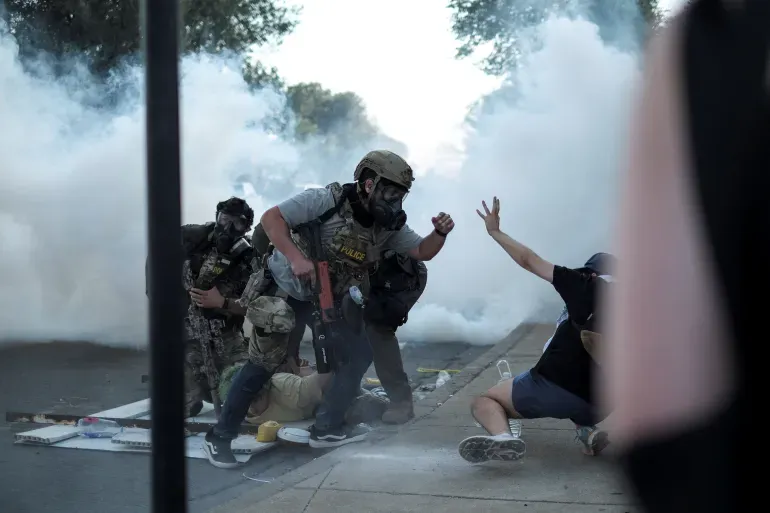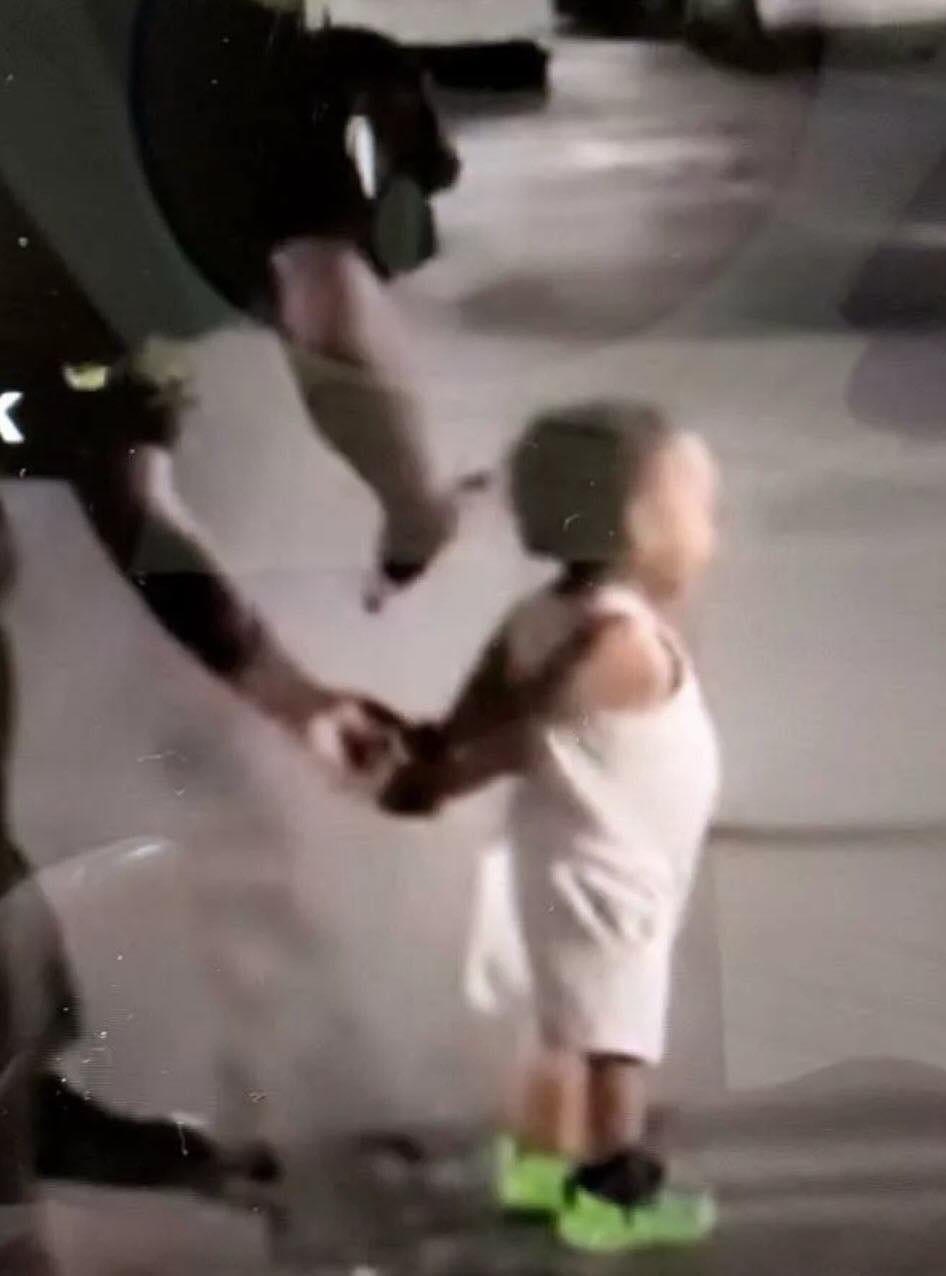A Soldier's Duty
"I was out there crying when I seen the little girl come around the corner, because they was bringing the kids down, too, had them zip tied to each other. One of them [soldiers] literally laughed. He was standing right here. He said, ‘Fuck them kids.’”

“The truth is that people who pull triggers are ultimately responsible, whether they’re following orders or not. An army of people making individual moral choices may be inefficient, but an army of people ignoring their morality is horrifying.” — Joel Stein

We were running down a straight and flat country road through fields of soybeans and early sprouts of spring corn, training for the league championship track meet. Gordy and I were attending a small college in the middle of Michigan’s mitten, a quiet and idyllic campus that felt disconnected from the rest of the country. No war protests ever developed under the giant oaks or in front of the administration building. The school’s enrollment was mostly middle-class kids who had few worries. I was not one of them, economically, or intellectually. I could not keep my head out of the news and the reality that my generation was dying in a Southeast Asian war for no discernible reason.
When we got back to the field house, a small group of students had gathered near a few benches, crowded around a girl holding a transistor radio. She had just turned up the volume and about ten people were leaning in to hear the voice of a newscaster.
“See? I told you,” she said. “They’re really shooting students in Ohio because of the war.”
“Oh, come on,” Gordy said. “Nobody’s shooting at students.”
“Yes, they are,” the girl insisted. Her expression indicated she would not countenance doubt. “And some are dead.”
Gordy did not respond, and I was worried she was correct.
“Who’s doing the shooting?” I asked.
“The National Guard.” She was starting to sob. “The governor down there sent soldiers to Kent State to stop protests over the stupid war.”
The day was May 4, 1970, and American soldiers were shooting at American citizens. They were simply following orders. Sixty-seven shots were fired in thirteen seconds. Four died; nine were wounded. Young people protesting President Richard Nixon’s invasion of Cambodia, escalating the War in Vietnam, became the enemies and the targets of the Ohio National Guard. The troops had been dispatched for the vague purpose of restoring order at a small school where no order had been lost. Instead, they left behind blood and silence.
What was the moral calculus for the young men holding the weapons? Or did they even indulge one? Private James Pierce, in uniform of the guard that sunny spring day, said, “They told us we were under attack, rocks, bottles, shouting. Then someone yelled, ‘Fire!’, and I did. I wish I hadn’t.”
Another unidentified soldier recalled the confusion for a reporter: “We were trained to follow orders. We weren’t trained to shoot kids.”
Among the victims was nineteen-year-old Allison Krause. The day before, she had told her mother, “Flowers are better than bullets.” She was right, but it did not save her. Krause’s parents never forgot those words or forgave the nation that taught soldiers to see children as threats.
No one was convicted of a crime. The government later agreed to a settlement but admitted no wrongdoing. Kent State, though, became a symbol of what happens when the government turns its guns inward and a soldier’s oath to defend the Constitution collides with a citizen’s right to dissent, which is also what that Constitution protects.
Although we are more than a half-century removed from Kent State, our leaders appear to have learned nothing. The current occupant of the White House is ordering National Guard soldiers and ICE agents into American cities, permitting them to use deadly force against their fellow citizens. The rules of engagement appear to be just engage anyone who is brown or black, and do not exercise restraint. ICE, DHS, Border Patrol, FBI, and ATF, assaulted a South Shore Chicago apartment building after rappelling onto the roof from helicopters as if they were Navy Seals sent to take out Osama Bin Laden. Soldiers and agents used flash-bang grenades, broke down doors, and carried out a “military-style” entry into the building.
Feds were reportedly looking for criminal immigrants but acted like government terrorists. Children were dragged from their beds, some unclothed, separated from their parents or mothers, and later zip-tied together and led outside. Witnesses described property damage, destruction, unnecessary aggressive force, doors kicked in, and furniture smashed. Residents said innocent bystanders, witnessing the assault, were arrested, handcuffed, and detained for hours without questioning. No one in the building seemed to know what was happening or why.
“They was terrified,” said Eboni Jackson, a neighbor who watched the entire scene. “The kids was crying. People was screaming. They looked very distraught. I was out there crying when I seen the little girl come around the corner, because they was bringing the kids down, too, had them zip tied to each other. One of them [soldiers] literally laughed. He was standing right here. He said, ‘Fuck them kids.’”
One of “them kids” is pictured below in a shot taken by a neighbor and posted on social media. If it doesn’t disturb your soul, you probably understand nothing about what it means to be an American, or what we used to think it meant to be an American. Maybe you lack the thinnest shred of humanity. Even if your veins are filled with MAGA red corpuscles, surely you must feel some sense of shame at what has been done to this child by representatives of your government. How much horror is needed to appease the petulant little man being allowed to destroy this country?

We have arrived at the moment on a historical timeline where once again orders and conscience are in a state of conflict. Kent State taught us that obedience without reflection can lead to tragedy. The Constitution clearly demands not blind loyalty, but moral judgment. In Portland, Chicago, Los Angeles, and Memphis, the president has set up circumstances that can lead to an inciting incident, which might be exactly what he wants to justify declaring martial law. He is pitting people sworn to defend the Constitution against people exercising their rights that are guaranteed by that document. A soldier might mistake an insult for a threat to his life and pull a trigger that kills not just a protestor but also a bit of his own humanity while also putting a bullet hole through the parchment that founded this country.
If the White House continues to violate American law and principles that sustain this democratic republic, the last hope for the country will rely on soldiers ordered to do wrong. The U.S. military has been effective in conflicts because it has relied on young service members to obey orders from their commanders. Each of them, in the very near future, may confront an enduring question of what is a lawful command when it conflicts with the spirit and the letter of the Constitution. Soldiers, however, do not always have time to reflect. In the split second between command and consequence, judgment collapses into instinct, and instinct follows training, which means tragedy can be the consequence.
Obedience is not a sound defense, either, for the soldier. Long before Kent State, an architect of the Holocaust, Adolf Eichmann, tried to escape judgment at Nuremberg by arguing he was just following orders. He designed the logistics and death camps that killed six million Jews, and thought he should not be convicted of war crimes because he was doing as Hitler ordered.
“I obeyed orders,” he told the court. “Regardless of what I was ordered to do, I obeyed.”
His plea was rejected and the world concluded that obedience cannot erase moral responsibility. That precedent still governs military law today. A soldier must disobey manifestly unlawful orders. The rifle barrel becomes a moral compass. The question is not just what is lawful but what is right. When the orders come to fire on citizens, and that is a very real possibility in this nation, every trigger becomes a test of the republic itself.
And it’s a test America cannot afford to fail.